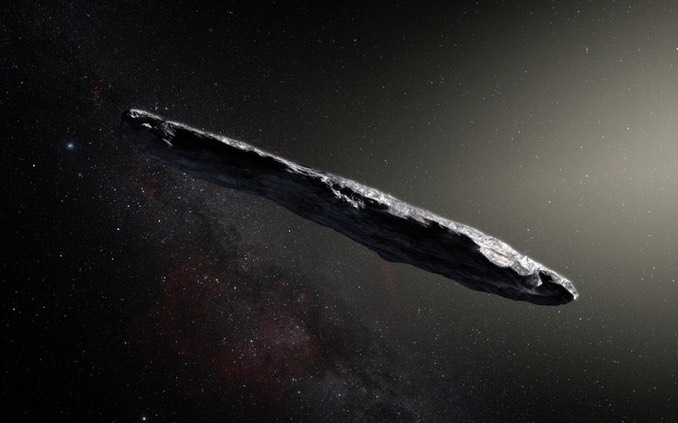
The discovery of the interstellar object now known as ‘Oumuamua in October 2017 was a premiere: for the first time, astronomers were able to visit an interstellar object visiting our Solar System. Unfortunately, the visitor was caught only as it was leaving, but astronomers were still able to use ground-based and space telescopes to measure the object’s motion.
Now, a group of astronomers led by Coryn Bailer-Jones has managed to back-track ‘Oumuamua’s motion and to identify four candidate stars where the interstellar object could have originated. Earlier studies had attempted similar reconstructions of ‘Oumuamua’s origin, but had not come up with plausible candidates.
These earlier studies were missing a crucial ingredient: in June 2018, a group led by ESA astronomer Marco Micheli had shown that ‘Oumuamua’s orbit within the Solar System is not that of an object in free fall, that is, of an object moving exclusively under the influence of gravity. Instead, there was some additional acceleration when the object was close to the Sun. The likely explanation is that ‘Oumuamua has some similarity to a comet – with ice that, when sufficiently heated by sunlight, produces gas that will in turn accelerate the source object like an exceedingly weak rocket engine. Although weak – the outgassing was not visible on images like it is with comets close to the Sun – it is too large to be ignored when back-tracking the orbit.
The new study by Bailer-Jones and colleagues takes into account how ‘Oumuamua’s orbit has changed as the object passed close to the Sun, giving the astronomers a precise estimate of the direction the object came from originally, as well as the speed at which it entered our Solar System.
Various studies had already suggested that ‘Oumuamua was ejected from its home star’s planetary system during the planet formation phase, when there were many small-sized objects (“planetesimals”) flying around which interact with giant planets in the system. The object’s home star is likely to have two key properties: tracing back ‘Oumuamua’s orbit will lead us directly back to, or at least very close to, the home star. In addition, the relative speed of ‘Oumuamua and its home star is likely to be comparatively slow – objects are typically not ejected from their home systems at large speeds.
Bailer-Jones and his colleagues found four stars that are possible candidates for ‘Oumuamua’s home world. All four of them are dwarf stars. The one that came closest to ‘Oumuamua, at least about one million year ago, is the reddish dwarf star HIP 3757. It approached within about 1.96 light-years. Given the uncertainties unaccounted for in this reconstruction, that is close enough for ‘Oumuamua to have originated from its planetary system (if the star has one). However, the comparatively large relative speed (around 25 km/s) makes it less probable for this to be ‘Oumuamua’s home.
The next candidate, HD 292249, is similar to our Sun, was a little bit less close to the object’s trajectory 3.8 million years ago, but with a smaller relative speed of 10 km/s. The two additional candidates met ‘Oumuamua 1.1 and 6.3 million years ago, respectively, at intermediate speeds and distances. These stars have been previously catalogued by other surveys, but little is known about them.
While these four are plausible candidates, the smoking gun is still missing. In order to eject ‘Oumuamua at the observed speeds, the home system would have needed to feature a suitable giant planet that could slingshot ‘Oumuamua into the depths of space. So far, no such planet has been detected around those stars – but since none of the stars have been examined closely for planets so far, that could well change in the future.
The study is also limited by the limited number of radial velocities included in Gaia’s second data release. Gaia’s third released, envisioned for 2021, should provide such data for a sample of stars ten times larger, which might lead to the identification of additional candidates. The search for ‘Oumuamua’s home continues. The study presented here presents interesting candidates, but we haven’t quite followed our interstellar visitor home all the way, yet.



